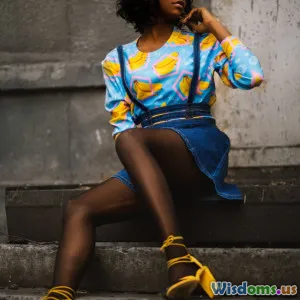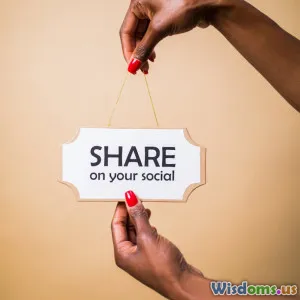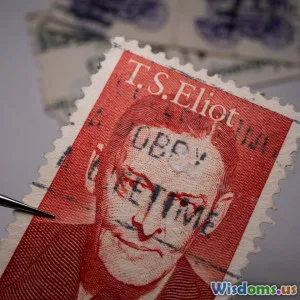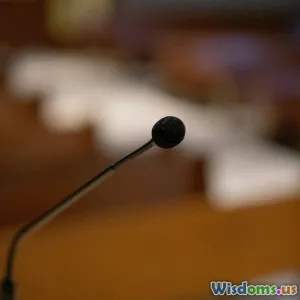
Dismantling Beauty Myth: What Society Gets Wrong
8 min read Explore how society misrepresents beauty and learn to challenge the damaging myths shaping our perceptions. (0 Reviews)
Dismantling the Beauty Myth: What Society Gets Wrong
Beauty, a concept deeply entrenched in human history, is often celebrated yet paradoxically misunderstood. In today’s world dominated by visual media, advertising, and social platforms, beauty has become a battleground for cultural ideals — many of which are rooted in myths that distort reality and harm our self-image. This article seeks to peel back these layers, illuminating what society historically and currently gets wrong about beauty.
The Origins of the Beauty Myth
The term "beauty myth" was popularized by feminist writer Naomi Wolf, who argued that society uses unattainable beauty standards as a means to undermine women's power. This myth suggests that women must conform to specific physical traits to be valued, respected, or succeed socially.
Historically, beauty standards have fluctuated — from the rounder figures prized during the Renaissance to the ultra-thin ideals of the late 20th century. Nonetheless, one consistent characteristic is that these standards often serve commercial purposes, feeding industries such as fashion, cosmetics, and diet products. The myth is less about genuine admiration and more about control and profit.
What Society Gets Wrong About Beauty
1. Beauty is Universal and Fixed
One of the biggest misconceptions is that beauty is universal— that a particular look is attractive everywhere and for everyone. Research in anthropology and cross-cultural studies shows this is far from true. For example, while Western societies often idealize thinness, many African cultures favor fuller body types as signs of health and prosperity.
This diversity illustrates that beauty standards are social constructs, not biological absolutes. Treating beauty as fixed entity limits our appreciation of difference and compromises inclusive representation.
2. Beauty Equals Worth
The conflation of physical beauty with personal worth is a damaging myth. It promotes the dangerous idea that appearance alone dictates one’s value in society. Psychologist Carol Dweck’s studies on self-esteem reveal that individuals exposed to such standards experience lower confidence, increased anxiety, and even depression.
For instance, a 2017 study from the University of Haifa examined the psychological impact on teenagers constantly exposed to idealized images in media, finding significant correlations between appearance pressure and eating disorders.
3. Aging is the Enemy of Beauty
Advertising often portrays youth as synonymous with beauty, glossing over the natural, enriching process of aging. This creates anxiety around getting older, fueling billion-dollar anti-aging industries.
In reality, societies that respect elders or embrace aging provide alternative narratives. Japanese concepts like "Wabi-Sabi" celebrate imperfection and transience, encouraging a more balanced appreciation of beauty that includes all life stages.
4. Beauty Is Only Skin Deep
Surface appearance is only one facet of beauty. Yet society’s focus rarely extends beyond physical traits, neglecting attributes like kindness, creativity, and intelligence. This narrow perspective undervalues the colorful complexities that define true beauty.
Renowned author Maya Angelou beautifully summarized this when she said, "People will forget what you said. People will forget what you did. But people will never forget how you made them feel."
The Role of Media and Technology
Media acts as both a mirror and a mold for beauty perceptions. The rise of Photoshop, filters, and viral beauty challenges creates an often unattainable reality. A Nielsen report in 2021 highlighted that 70% of teen girls feel media pressures to look a certain way, leading to increased dissatisfaction with their bodies.
Moreover, social media platforms intensify comparison culture. Users carefully curate images showing peak moments that may not reflect daily realities, promoting an unrealistic benchmark for beauty.
One positive shift is the emergence of influencer activism, where diverse figures advocate for body positivity, transparency, and mental health awareness. Campaigns such as #NoFilter and #BodyPositivity encourage embracing realness and imperfection.
Steps Toward Dismantling the Beauty Myth
1. Promote Diversity in Representation
Fashion and beauty industries can lead change by showcasing varied body types, ages, ethnic backgrounds, and gender expressions. Brands like Dove and Fenty Beauty have garnered acclaim for inclusive advertising and product lines designed for broad demographics.
2. Media Literacy Education
Teaching critical thinking skills about media images allows consumers to recognize alterations and motives behind curated beauty content. Understanding that many images are altered or staged fosters healthier self-perceptions.
3. Redefine Standards Within Communities
Empowering individuals to challenge the myths in their immediate circles, from schools to workplaces, creates ripple effects. Celebrating achievements beyond looks and encouraging authentic self-expression nourishes resilience against societal pressures.
4. Encourage Mindfulness and Self-Care
Focusing on wellness, mental health, and inner growth rather than external validation promotes a balanced beauty experience. Practices such as meditation, journaling, and positive affirmations can reinforce personal worth beyond appearance.
Conclusion: Toward a Healthier Understanding of Beauty
The beauty myth is a complex social construct that damages self-esteem and reinforces narrow ideals. By questioning its premises, acknowledging cultural diversity, and embracing authenticity, society has the opportunity to reshape the narrative around beauty.
This transformation benefits not only individuals striving for acceptance but also fosters a more inclusive, empathetic world where beauty is appreciated in its many forms. The dismantling of these myths is not just an aesthetic shift — it’s a profound cultural change toward valuing humanity’s rich spectrum.
As consumers, creators, and community members, recognizing and challenging the beauty myth empowers us all to experience beauty liberatingly and confidently.
Rate the Post
User Reviews
Popular Posts





















